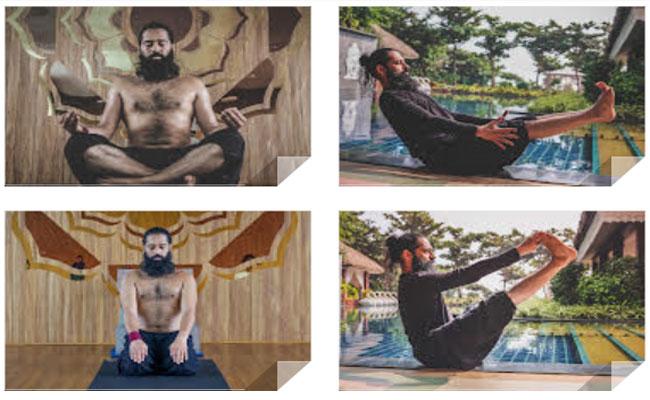How to Adapt Your Yoga Practice If You Have Glaucoma

By Himalayan Siddhaa Akshar
Akshar Yoga Institutions, Himalaya Yoga Ashrama, World Yoga Organisation
Glaucoma is a disorder of the eyes that develops when the optic nerve is harmed as a result of high eye pressure. Excess fluid in the eye, either because too much fluid is being produced or because of a drainage issue, is one potential factor contributing to the rise in pressure. There are situations when the cause is unknown.
Yoga Therapy
Yoga is a holistic science for well being and includes various techniques including postures, breathing exercises known as pranayama, meditation, mudras, and chanting etc. All of this are elements that form a part of yoga's vast practice. Regular practice of these simple asnas can also lower stress levels, alleviate mood, boost immunity and bring a whole host of benefits to the mind, body, and spirit.
1. Naukasana- Boat Pose
Formation of the Posture
·Lie on your back.
·• Raise your upper body 30 degrees off the ground.
·• Try to align your toes with your eyes by raising your legs 30 degrees off the ground.
·• Stand with your back straight and balance on your tailbone.
·• Arms can be parallel to the floor • Abdominal muscles should be contracted.
2. Sukhasana – Happy Pose
Formation of the posture
Place your palms on your knees, sit up straight in Dandasana with both legs extended. Fold the left leg and tuck it inside the right thigh. Then fold the right leg and tuck it inside the left thigh.
3. Vajrasana
Formation
Put your palms on your knees with the upward facing side facing up. Straighten your back and look forward. Gently bend your knees. Keep your heels near to each other. Avoid putting your toes on top of each other.
4. Ubhaya Padangushtasana (Big Toe Pose)
·Sit in sukhasana. Extend your legs forward in dandasana. Fold your legs and firmly clasp both big toes with your index, middle, and thumb. Start with straightening your right leg in the air. Then, while you maintain balance, gently straighten your left leg.
5. Vajrasana Gomukhasana(Thunderbolt Pose Cow)
• Gently lower your knees and sit on your heels • Rest your pelvis on your heels • Keep your big toes together but not crossed • Keep your hands on your knees and keep your head and neck straight and in alignment • Focus on the breath and observe the action of inhaling and exhaling • Raise your right hand above your shoulder and drop it to the back • Bend your left elbow so you can clasp your right palm with your left hand
Word of Advice
Avoiding any kind of physical activities or intense workouts is crucial. Avoid any poses or inversions that could lower your head below your heart. The intraocular pressure will rise in these kinds of postures. Alternatively, you can enhance your condition by combining the asanas on the list with your prescription.
NOTE: Please seek medical advice before attempting any of these yoga practises.
Also Read: 5 Ways To Energise Your Yoga Practice This February





